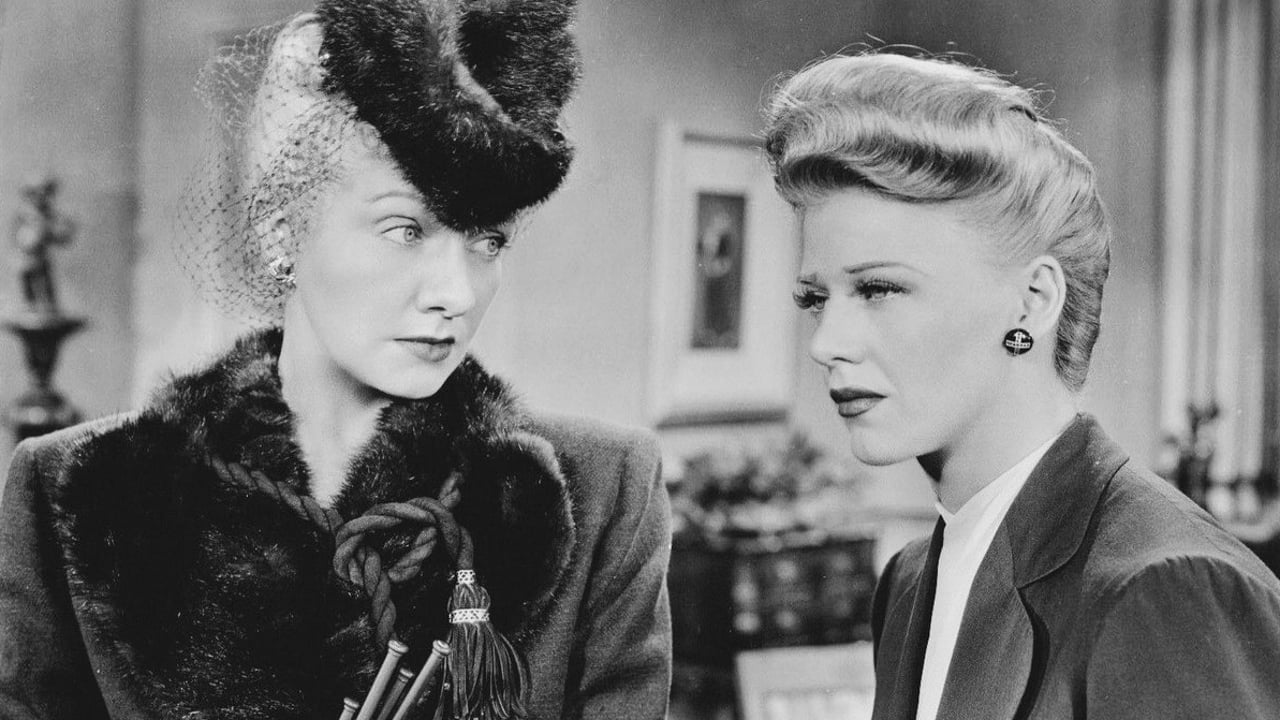

Really Surprised!
... View MoreOne of the best films i have seen
... View MoreIt's simply great fun, a winsome film and an occasionally over-the-top luxury fantasy that never flags.
... View MoreTrue to its essence, the characters remain on the same line and manage to entertain the viewer, each highlighting their own distinctive qualities or touches.
... View MoreShe's got glamour surrounding her with furs, jewels, the latest fashions, and all the available men at her beck and call. Yet, she's terribly unhappy, filled with self doubt, depression and on the verge of a breakdown due to nervous exhaustion. Even in dowdy suits that don't hide her loveliness, Ginger Rogers' Liza Elliott seems barely living, only going through the motions. Yet, she has a fantastic fantasy life, and with psycho analysis tries to make sense of it all.Even before "Oklahoma!", this Broadway hit went to places in musical theater that most shows avoided. A smash hit for Gertrude Lawrence, it seems the perfect vehicle for any movie musical queen to take on. Who would it be? Judy at MGM? Alice at 20th? Rita at Columbia? The independently working Ginger Rogers got the key part, and does her best to instill it with every emotion known to mankind, er womankind, that is when she chooses to act like a typical mid 20th Century woman.Perhaps the fact that this seems quite ahead of its time can be utilized as the reason for its awkwardness. It's certainly lovely to look at, but that one key ingredient, magic, is missing. The Kurt Weill/Ira Gershwin score seems to move in and out, played mostly over the fantasy sequences, and no more substantial than the humming in her head of the show's glorious ballad, "My Ship". Surrounding Rogers are the wisecracking Ray Milland who refers to Rogers as "boss lady", Warner Baxter as her devoted suitor who bears more than a passing resemblance to her father, Jon Hall as a hunky movie star, and Mischa Auer as the very effeminate photographer whose statements about Hall are filled with obvious sexual innuendo.There's so much to like, if not love, in this big colorful spectacle. This show, rarely revived, has been documented in the Gertrude Lawrence musical bio "Star!" (where Julie Andrews camped it up in an over-the- top "Jenny") and a profile featuring original cast member Danny Kaye and a seductive Lynn Redgrave on the PBS special "Musical Comedy Tonight". Hopefully, this will get a proper revival one day, but something tells me that its attitudes about women and careers are considered very dated.
... View MoreI like this movie. It is confusing and difficult, but you can't help but like it. Ginger Rogers plays a fashion magazine editor...and she finds herself having headaches and feeling dissatisfied. This makes no sense, as she has an exceptional job (especially for 1940) three suitors, and conscious and unconscious lives that are fabulously costumed. She goes to her doctor who recommends a psychiatrist...a drastic move for the time...which she promptly declines...but then does finally go to. Ginger undergoes a great deal of stress in this film,and keeping a bottle of aspirin at hand might be wise. As she makes progress with her shrink...her dream sequences become more and more lavish. The film is beautifully costumed...even clothes left lying on a chair...are fabulous. And there are HATS. HATS. Hats... mousey through military...lots of hats...and FURS...Ginger has one dress with a floor length mink skirt...lined with gold and scarlet sequins, two or three fur coats, a muff, and several other dresses trimmed with fur. Pull the shades and make certain that no one from PETA is around when you run this film. The dream sequences are the real meat of this...they are very beautiful and very surreal. In the end, of course, Ginger selects one of the men (no, not the married one) and seems to be on the road to recovery. You get the feeling that a lot got left out...and I don't know what (yet). I know Danny Kaye was 'discovered' in the Broadway show...and that he had special material. Danny was under contract to Sam Goldwyn by the time this was made...so neither he nor any of his special material made the transition into this film. This film is a visual knock out...and a restored print should be made and hi-def DVD's struck...so we can watch this from time to time. It cannot help but remain dated and politically incorrect....that is the legacy of its 1940 dateline.. but it will certainly always be stunning to look at.
... View MoreA product of the times but still dreadful! Ginger looking rather mannish (get it?) until she finds a man. Almost all songs deleted except for "Jenny" ("My Ship" which is the crucial key to the solution of her problems was also inexplicably deleted.). Film composers were generally treated like dirt including Leonard Bernstein in "On the Town" with "improvements" by Roger Edens. But this one is the worst! Historically of some interest but still to be avoided.
... View MoreA Technicolor spectacular, with costumes and wonderful sets to match, but the story isn't much, mostly what you might expect to read in Popular Psychoanalysis magazine.Best are the dream and reverie sequences, especially the trial in the circus ring. These are where the singing and dancing is, but there is not much and what little there is is not very exciting.
... View More